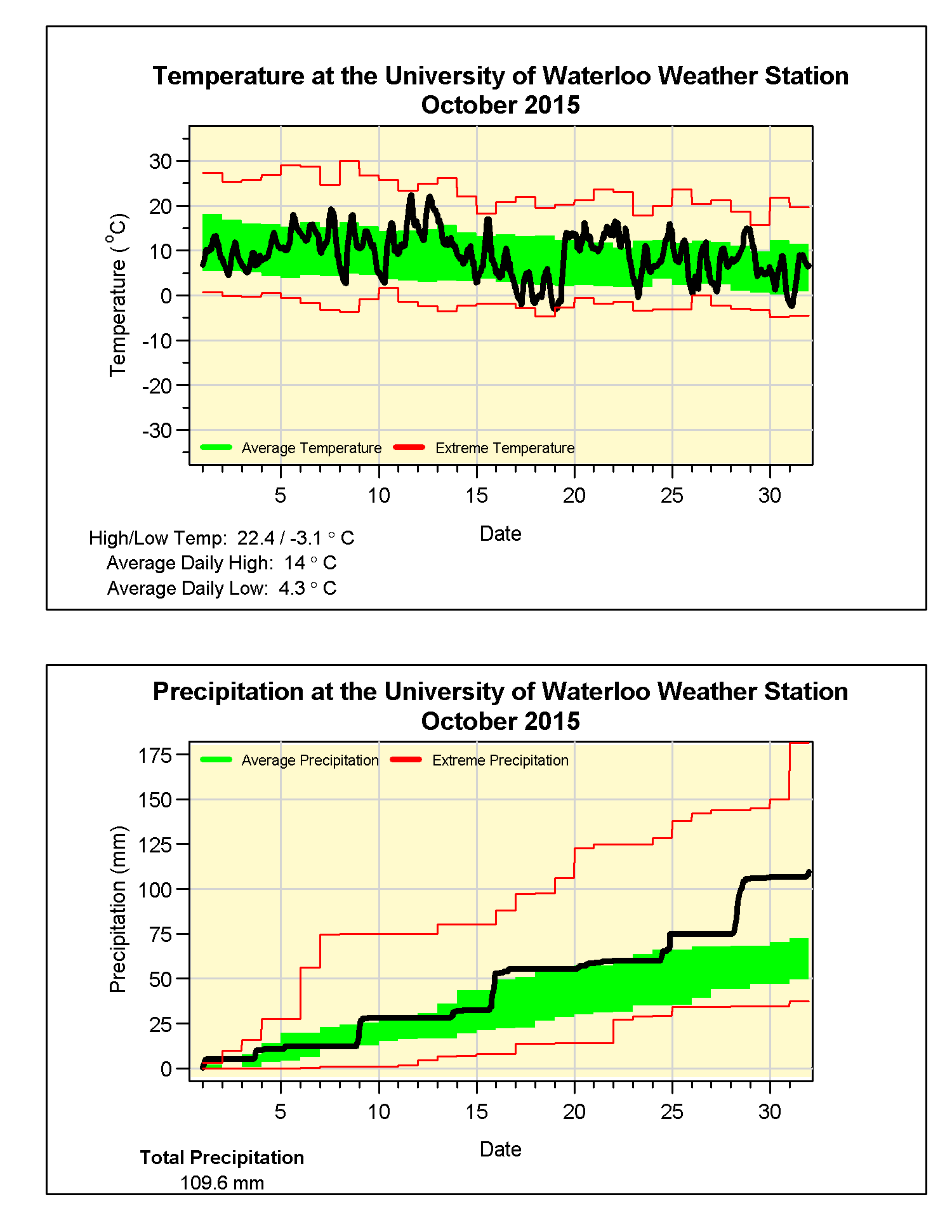https://www.climate.gov/news-features/department/8443/all
However, it is always important to keep in mind exactly just how much effect El Ninos generally have in our region. Generally, the further away from the Pacific, the less direct effect El Nino will have on an area. Thus you can imagine that around Waterloo it isn't exactly a slam dunk that an El Nino will always be the dominant factor in what we see. For example, a less predictable and more variable factor called the Arctic Oscillation (AO) will usually have a great effect on what we see during a typical winter. See the recent variations in the AO here:
http://www.cpc.noaa.gov/products/precip/CWlink/daily_ao_index/ao.shtml
So the real question is just how much of a difference does El Nino make for us?
To answer this question I did a quick plot of the average temperature, total precipitation and total snowfall for each winter between 1950 and 2010 in our region. The winters with the seven strongest El Ninos are shown as red dots in the plot below (don't worry about the units of the plots, it is really just the patterns that are important here, the dark line at zero would be the average 1981-2010 value):
From the plot you can get an idea of the general variability of the different factors as well as how they are affected by El Nino. Looking at the temperature, strong El Ninos are not uniformly all well above average, but it could be said they are all average to above average. Thus you get the idea that El Nino will encourage warmer winters, but even the strong ones don't guarantee it.
Interestingly, for total precipitation it seems that El Ninos tend to not have either very wet or very dry overall winters (keep in mind total precipitation consists of both rainfall and snowfall). Most of the strong El Ninos have resulted in very average overall wetness.
The strongest El Nino effect appears to be in the total snowfall as all the red dots are either a little or a lot below the average line and none are above.
I have never been one who likes to make seasonal weather predictions (you can see why here: http://uwweatherstation.blogspot.ca/2014/12/what-is-winter-going-to-be-like-you.html ) and of course there are no guarantees when it comes to the weather. However, based on the pattern from past strong El Ninos, it would seem that there is a "good chance" that we will see less total snowfall this winter, above average temperatures, and about average total precipitation. But as always, mother nature will have the final say.
Frank Seglenieks
University of Waterloo Weather Station Coordinator
PS For full disclosure I have to say that I totally stole the idea for the graph from NOAA's ENSO blog, they created a similar graph for different regions of the US, I just adopted it for our region.




